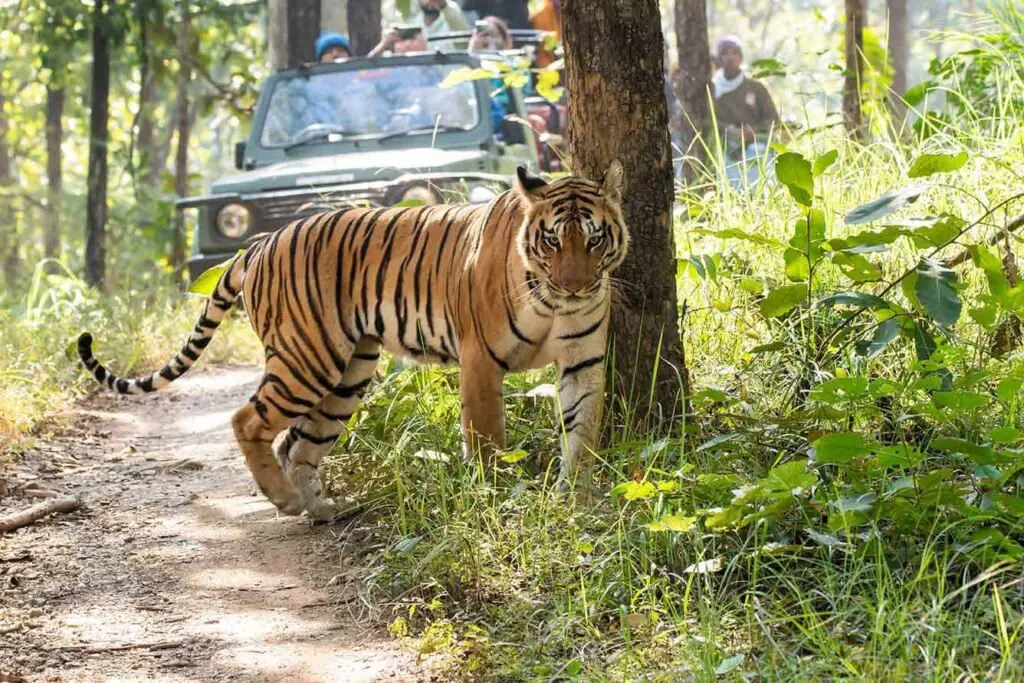BUTTERFLIES OF DUDHWA NATIONAL PARK
Dudhwa National Park, also known as Dudhwa Tiger Reserve or Dudhwa Rashtriya Udyan, is not only home to majestic tigers and rich birdlife but also to a colorful variety of butterflies. With over 150 species of butterflies, Dudhwa National Park provides a unique experience for nature enthusiasts. These butterflies add vibrancy to the park, flitting through the forests, grasslands, and wetlands, and playing an important role in the ecosystem.
In Dudhwa, butterflies are essential to maintaining biodiversity. They help pollinate flowers, assist in seed production, and are a crucial part of the food chain, supporting various other species. Observing butterflies in Dudhwa is a delightful experience, with their colors and patterns creating a beautiful sight against the park’s lush green background.
COMMON BUTTERFLY SPECIES IN DUDHWA NATIONAL PARK
Dudhwa is home to several well-known butterfly species. Some are seen often, while others are rare and can be spotted only in specific habitats.
| Butterfly Species | Description |
|---|---|
| Common Mormon | A black butterfly with white spots on its wings; often seen near flowering plants. |
| Lime Butterfly | Brightly colored in shades of yellow and black, commonly found near citrus plants. |
| Common Crow | Dark brown with white spots, it prefers shady areas of the forest. |
| Blue Tiger | Beautifully patterned with blue and black, often seen near water sources. |
| Peacock Pansy | Known for its eye-like spots on wings, adding to its colorful appearance; found in open sunny areas. |
COMMON MORMON
The Common Mormon is one of the most frequently seen butterflies in Dudhwa National Park. Recognizable by its black wings with white spots, this butterfly is often found near flowering plants, feeding on nectar. Although common, it is beautiful to observe as it flits from flower to flower.
Key Features:
- Color: Black with white spots
- Preferred Habitat: Near flowering plants
- Behavior: Frequently seen feeding on nectar
LIME BUTTERFLY
The Lime Butterfly is known for its bright yellow and black wings. It is commonly found near citrus plants, as these plants serve as hosts for its larvae. The Lime Butterfly is easily spotted in open areas, making it a favorite for butterfly watchers in Dudhwa Tiger Reserve.
Key Features:
- Color: Yellow and black
- Preferred Habitat: Near citrus plants
- Behavior: Often seen in open spaces
BARKING DEER
The barking deer, also known as muntjac, is smaller than other deer species in Dudhwa. Named for its unique, bark-like alarm call, this deer is a cautious animal and is often seen alone or in pairs. Barking deer prefer dense forests and are usually spotted near forest edges. Because of their shy nature, they are less frequently seen compared to other deer in Dudhwa Tiger Reserve.
Key Characteristics:
- Habitat: Dense forests and forest edges
- Group Behavior: Solitary or in pairs
- Size: Small with a reddish-brown coat
BLUE TIGER BUTTERFLY
The Blue Tiger Butterfly is a striking species with black and blue markings. It prefers moist areas and can often be spotted near water sources in Dudhwa. Its slow, graceful flight makes it easy to observe. The Blue Tiger is known for its unique color, which attracts butterfly enthusiasts to the park.
Key Features:
- Color: Blue and black
- Preferred Habitat: Near water sources
- Behavior: Slow and graceful flight
MIGRATORY BUTTERFLIES IN DUDHWA
While many butterflies in Dudhwa are resident species, some migratory butterflies also visit the park seasonally. These migratory butterflies arrive in Dudhwa during certain times of the year, adding to the park’s diversity. For instance, the Painted Lady and Common Emigrant are known to migrate to Dudhwa, where they stay for a few months before moving on.
Migratory Butterfly Examples:
- Painted Lady: Recognizable by its orange and black wings; migrates to Dudhwa seasonally.
- Common Emigrant: Known for its pale green color; migrates in large numbers.
Migratory butterflies not only add variety to the park’s butterfly population but also support pollination across different regions as they move.
BEST TIME TO SEE BUTTERFLIES IN DUDHWA
The best time to observe butterflies in Dudhwa National Park is from October to April. During these months, the weather is cooler, and many flowers are in bloom, attracting butterflies in large numbers. Early morning and late afternoon are ideal times for butterfly watching, as butterflies are usually active during these hours.
TIPS FOR BUTTERFLY WATCHING IN DUDHWA RASHTRIYA UDYAN
- Bring Binoculars: Binoculars help you observe butterflies from a distance without disturbing them.
- Wear Neutral Colors: Wearing neutral clothing helps you blend into the environment, making butterflies less likely to be startled.
- Approach Slowly: Butterflies are sensitive to movement; move slowly to get a closer look without scaring them away.
- Visit Flowering Areas: Butterflies are often found near flowers where they feed on nectar, so focus on these areas.
- Use a Guidebook: Carrying a butterfly guidebook can help identify the species you encounter in Dudhwa.
IMPORTANCE OF BUTTERFLIES IN DUDHWA NATIONAL PARK
Butterflies are an important part of the ecosystem in Dudhwa. They play a role in pollination, helping many plants reproduce. Butterflies also serve as food for birds and other small animals, thus supporting the food chain. Their presence indicates a healthy environment, as butterflies thrive in clean, undisturbed habitats. Observing butterflies in Dudhwa National Park offers a glimpse into the health and balance of this beautiful ecosystem.
Dudhwa National Park is a remarkable place to observe a wide variety of butterfly species. From the common ones like the Lime Butterfly and Blue Tiger to the seasonal visitors like the Painted Lady, butterflies in Dudhwa add vibrant colors and support the ecosystem. For visitors, butterfly watching in Dudhwa Rashtriya Udyan is a peaceful and enjoyable experience, offering close encounters with nature’s most delicate creatures.


